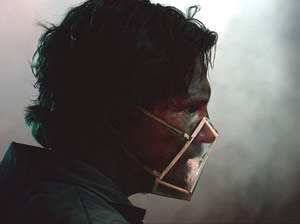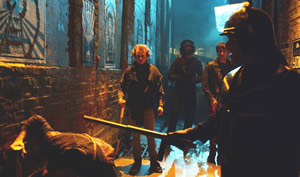Anthem FilmFest: Plato, Revolting, and Mendocino – All in a Cave
(Originally published on Blogcritics.org)
Ancient Greek philosopher Plato put in a couple of appearances at the Anthem Film Festival , part of theFreedomFest Conference in Las Vegas, July 8-11. Two of the short films showed influence, if not direct inspiration, by Plato’s tale of the cave, written 2,500 years ago (If you fell asleep in Philosophy 101, you can learn about the cave here).
The films, The Cage and Helio, both deserve praise for supporting the human quest for freedom and individualism. Cinematically, Heliowas a winner and The Cage was not.
One of the first things you learn about making movies is “show, don’t tell.” These two films are valuable to watch together if you want to get the yin and yang of this truism.
Helio, a word referring to the sun the characters in this movie cannot see, puts us into a dystopian future – a common setting, unfortunately, for current films about politics. Signs put up by the power structure in this world imply that it has been 200 years since the final war. The protagonist works in a mine. At a medical clinic there, members of a resistance movement show up for emergency medical help. Helping them constitutes treason, and this sets off a chain of events that lead the protagonist to change the world he lives in forever – opening Plato’s cave.
Does this film “show not tell”? Yes, and in an amazing way. Nearly all of the dialog is incidental to the action. Even without sound, you would be able to understand the story. What do you lose with this visual story telling? Not much. You don’t know exactly how this world became dystopian or why these people are living in a high-tech cave, but that is merely nice-to-know, non-essential background to a story about courage and heroism.
Also, the special effects are impressive and worthy of any Hollywood summer tent-pole film.
In contrast to Helio, The Cage was almost entirely talk. It could have been a radio show, although I recall radio shows that had a lot more action. The Cage tells the story of a lawyer who is unhappy professionally and with his marriage. He looks for solitude on a beach, but finds himself in front of a camp fire with a bum for company.
The bum, who sounds like a hippie Yoda, tells him a story about a boy locked in a cage (Plato’s cave) and how he escapes. There is interaction with a park ranger and a sheriff’s deputy. And when I say “interaction,” I mean talking. The dramatic question is whether the lawyer will realize that he has the power to change his life.
![]() Philosophically the film flirts with libertarian thought, but is more “occupy wall street” than anything else. We are presented with questionable concepts such as “the beach belongs to the people,” as a justification for violating a curfew. The bum, glorifying his day-by-day hobo life, seems unaware that his vagrant lifestyle would be impossible without the people who get up every day and go to jobs they may or may not like.
Philosophically the film flirts with libertarian thought, but is more “occupy wall street” than anything else. We are presented with questionable concepts such as “the beach belongs to the people,” as a justification for violating a curfew. The bum, glorifying his day-by-day hobo life, seems unaware that his vagrant lifestyle would be impossible without the people who get up every day and go to jobs they may or may not like.
The bum, arguing with the deputy who has come to escort him from the beach, quotes the Declaration of Independence, but leaves out “endowed by our creator.” Later, however, he talks about seeing the deputy’s “aura” – the “I’m spiritual but not religious” meme.
The Cage was filmed in Mendocino, north and “left” of San Francisco, so maybe this nonsense is to be expected.
Helio was written and directed by Teddy Cecil and stars Barrett James as the miner. Info about future screenings can be found at the film’s website or by following it on Twitter. More info on The Cage is available on IMDB.




